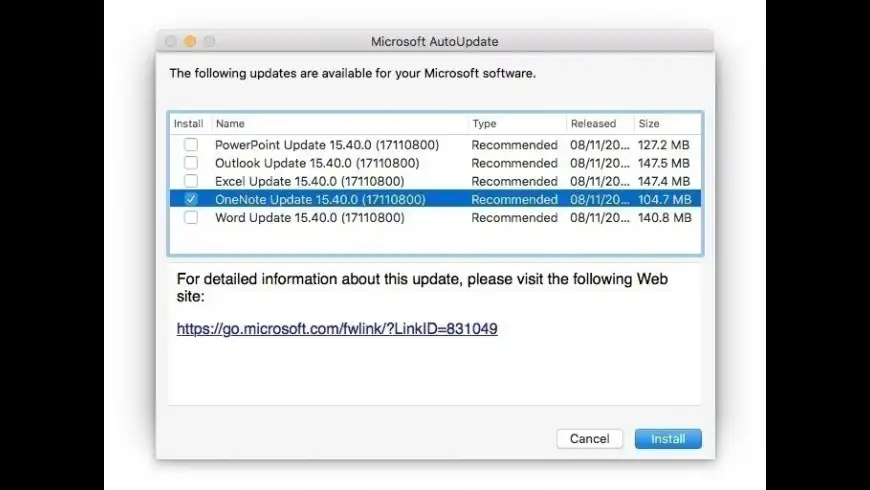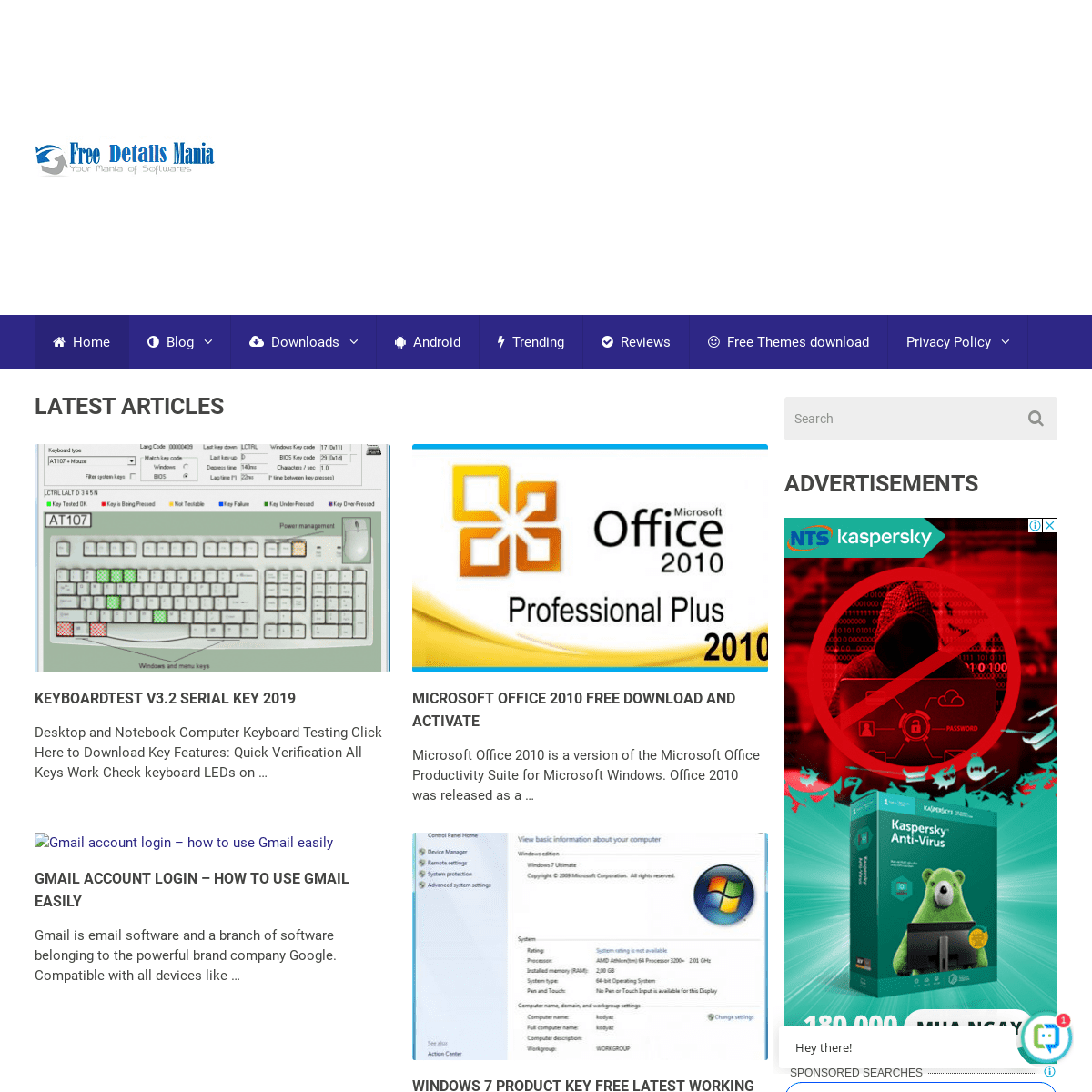- Microsoft Autoupdate For Mac Download
- Download Mac Browser
- Microsoft Autoupdate Tool For Mac
- Microsoft Autoupdate Download Mac 3.11 Download
- Microsoft Autoupdate Mac Won't Update
This update to Microsoft AutoUpdate for Mac is part of Microsoft's continued effort to provide the latest product updates to customers. To receive future product updates, you must install this update. Jan 15, 2020 Update Microsoft applications for Mac by using msupdate. 1/15/2020; 2 minutes to read; In this article. Applies to: Office for Mac, Office 2019 for Mac, Office 2016 for Mac Microsoft AutoUpdate (MAU) version 3.18 and later includes the msupdate command-line tool. Mar 19, 2020 Download links are only provided for the most recent release of Microsoft AutoUpdate; Microsoft AutoUpdate provides updates to various Mac products from Microsoft. Therefore, you might receive a notification to update Microsoft AutoUpdate even if you're not running Office for Mac. Desktop Central is a Windows Desktop Management Software for managing desktops in LAN and across WAN from a central location. It provides Software Deployment, Patch Management, Asset Management, Remote Control, Configurations, System Tools, Active Directory and User Logon Reports. Download Microsoft Office for Mac 2011 14.7.7 Update from Official Microsoft Download Center. This is your 365. To use AutoUpdate, open an Office application, and then on the Help menu, click Check for Updates. To remove this update This update does not include an uninstall feature. To restore your application to its original state, delete.
This topic describes how to update a removable or in-chassis device's firmware using the Windows Update (WU) service. For information about updating system firmware, see Windows UEFI firmware update platform.

To do this, you'll provide an update mechanism, implemented as a device driver, that includes the firmware payload. If your device uses a vendor-supplied driver, you have the option of adding the firmware update logic and payload to your existing function driver, or providing a separate firmware update driver package. If your device uses a Microsoft-supplied driver, you must provide a separate firmware update driver package. In both cases, the firmware update driver package must be universal. For more info about universal drivers, see Getting Started with Universal Windows drivers. The driver binary can use KMDF, UMDF 2 or the Windows Driver Model.
AutoUpdate for Mac, version 3.11 (171010) Will you PLEASE give us the ability to schedule when and how often AutoUpdate for Mac runs? It is unbelievably annoying to have it pop up several times a week (usually at inopportune moments). Word 2016 For Mac 3.11 Autoupdate Rating: 8,3/10 7524 reviews Note: We recommend you always keep Office up to date to get the latest security fixes and improvements. If you're also an Office 365 subscriber, you'll also get the newest features.
Because WU cannot execute software, the firmware update driver must hand the firmware to Plug and Play (PnP) for installation.
Firmware update driver actions
Typically, the firmware update driver is a lightweight device driver that does the following:
At device start or in the driver's EVT_WDF_DRIVER_DEVICE_ADD callback function:
- Identify the device to which it is attached.
- Determine whether the driver has a firmware version that is more recent than the version on the firmware currently flashed on device hardware.
- If a firmware update is necessary, set an event timer to schedule the update.
- Otherwise, do nothing until the driver is started again.
During system runtime:
- If an update is queued, wait for a set of conditions to be met.
- When conditions are met, perform the firmware update on the device.

Firmware update driver contents
Typically, the firmware update driver package contains the following:
- Driver catalog
- Function driver (.sys or .dll)
- Firmware update payload binary
Submit your firmware update package as a separate driver submission.
Adding firmware update logic to a vendor-supplied driver
The existing function driver can implement the firmware update mechanism, as shown in the following diagram:
Alternatively, if you want to update the function driver and the firmware update driver separately, create a second device node, on which you will install the firmware update driver. The following diagram shows how one device can have two separate device nodes:
In this case, the function and firmware device nodes must have different hardware IDs in order to be targeted independently.
There are a couple ways to create a second device node. Certain device types have the ability to expose a second device node on one physical device, such as USB. You can use this functionality to create a device node targetable by WU, and install a firmware update driver on it. Many device types, however, do not allow a single physical device to enumerate more than one device node.
In this case, use an extension INF that specifies the AddComponent directive to create a device node that can be targeted by Windows Update and install the firmware update driver on it. The following snippet from an INF file shows how you can do this:
In the above INF sample, ComponentIDs = ComponentDeviceId indicates that the child device will have a hardware ID of SWCComponentDeviceId. When installed, this INF creates the following device hierarchy:
For future firmware updates, update the INF and binary file containing the firmware payload.

Microsoft Autoupdate For Mac Download
Adding firmware update logic to a Microsoft-supplied driver
To update firmware for devices that use a Microsoft-supplied driver, you need to create a second device node, as shown above.
Best practices
In your firmware update driver INF, specify DIRID 13 to cause PnP to leave the files in the driver package in the DriverStore:
PnP resolves this location when it installs the device. The driver can then open this registry key to determine the location of the payload.
Firmware update drivers should specify the following INF entries:
To locate another device node, the firmware driver should walk the device tree relative to itself, not by enumerating all device nodes for a match. A user may have plugged in multiple instances of the device, and the firmware driver should only update the device with which it is associated. Typically, the device node to be located is the parent or sibling of the device node on which the firmware driver is installed. For example, in the diagram above with two device nodes, the firmware update driver can look for a sibling device to find the function driver. In the diagram immediately above, the firmware driver can look for the parent device to find the primary device with which it needs to communicate.
The driver should be robust to multiple instances of the device being on the system, possibly with multiple different firmware versions. For example, there may be one instance of the device that has been connected and updated several times; a brand new device may then be plugged in which is several firmware versions old. This means that state (such as current version) must be stored against the device, and not in a global location.
If there is an existing method to update the firmware (EXE or co-installer, for example), you can largely reuse the update code within a UMDF driver.
Applies to:
Microsoft regularly publishes software updates to improve performance, security, and to deliver new features.
To update Microsoft Defender ATP for Mac, a program named Microsoft AutoUpdate (MAU) is used. By default, MAU automatically checks for updates daily, but you can change that to weekly, monthly, or manually.
If you decide to deploy updates by using your software distribution tools, you should configure MAU to manually check for software updates. You can deploy preferences to configure how and when MAU checks for updates for the Macs in your organization.
Use msupdate
MAU includes a command-line tool, called msupdate, that is designed for IT administrators so that they have more precise control over when updates are applied. Instructions for how to use this tool can be found in Update Office for Mac by using msupdate.
In MAU, the application identifier for Microsoft Defender ATP for Mac is WDAV00. To download and install the latest updates for Microsoft Defender ATP for Mac, execute the following command from a Terminal window:
Set preferences for Microsoft AutoUpdate
This section describes the most common preferences that can be used to configure MAU. These settings can be deployed as a configuration profile through the management console that your enterprise is using. An example of a configuration profile is shown in the following sections.
Set the channel name
The channel determines the type and frequency of updates that are offered through MAU. Devices in InsiderFast (corresponding to the Insider Fast channel) can try out new features before devices in External (corresponding to the Insider Slow channel) and Production.
The Production channel contains the most stable version of the product.
Tip
In order to preview new features and provide early feedback, it is recommended that you configure some devices in your enterprise to InsiderFast or External.
| Domain | com.microsoft.autoupdate2 |
| Key | ChannelName |
| Data type | String |
| Possible values | InsiderFast External Production |
Warning
Download Mac Browser
This setting changes the channel for all applications that are updated through Microsoft AutoUpdate. To change the channel only for Microsoft Defender ATP for Mac, execute the following command after replacing [channel-name] with the desired channel:
Set update check frequency
Change how often MAU searches for updates.
| Domain | com.microsoft.autoupdate2 |
| Key | UpdateCheckFrequency |
| Data type | Integer |
| Default value | 720 (minutes) |
| Comment | This value is set in minutes. |
Change how MAU interacts with updates
Change how MAU searches for updates.
| Domain | com.microsoft.autoupdate2 |
| Key | HowToCheck |
| Data type | String |
| Possible values | Manual AutomaticCheck AutomaticDownload |
| Comment | Note that AutomaticDownload will do a download and install silently if possible. |
Change whether the 'Check for Updates' button is enabled
Change whether local users will be able to click the 'Check for Updates' option in the Microsoft AutoUpdate user interface.
| Domain | com.microsoft.autoupdate2 |
| Key | EnableCheckForUpdatesButton |
| Data type | Boolean |
| Possible values | True (default) False |
Disable Insider checkbox
Set to true to make the 'Join the Office Insider Program...' checkbox unavailable / greyed out to users.
Microsoft Autoupdate Tool For Mac
| Domain | com.microsoft.autoupdate2 |
| Key | DisableInsiderCheckbox |
| Data type | Boolean |
| Possible values | False (default) True |
Limit the telemetry that is sent from MAU
Set to false to send minimal heartbeat data, no application usage, and no environment details.
| Domain | com.microsoft.autoupdate2 |
| Key | SendAllTelemetryEnabled |
| Data type | Boolean |
| Possible values | True (default) False |
Example configuration profile
The following configuration profile is used to:
- Place the device in the Insider Fast channel
- Automatically download and install updates
- Enable the 'Check for updates' button in the user interface
- Allow users on the device to enroll into the Insider channels
JAMF
Intune
Microsoft Autoupdate Download Mac 3.11 Download
To configure MAU, you can deploy this configuration profile from the management tool that your enterprise is using:
- From JAMF, upload this configuration profile and set the Preference Domain to com.microsoft.autoupdate2.
- From Intune, upload this configuration profile and set the custom configuration profile name to com.microsoft.autoupdate2.